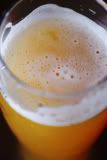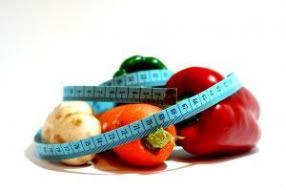
A recent study from the University of Florida found that rats who ate a diet high in fructose developed leptin resistance, a condition that contributes to overeating.
Leptin is a hormone that signals fullness.
When the rats were given a high-fat, high-calorie diet, the leptin resistant group gained more weight than the others.
If these results are applicable to humans, they help shed some light on the obesity epidemic in our country. Added sugars are in everything!
Fructose can be added or natural in foods.
It's in fruits and fruit juices, cured or breaded meats, sweetened milk, honey, and
maple syrup, some vegetables and some bread and cereal products, according to the Mayo Clinic.
It’s also in soft drinks, pastries, ketchup, jellies and many processed foods, according to
It’s also in soft drinks, pastries, ketchup, jellies and many processed foods, according to
In food label ingredient lists, sucrose also refers to fructose. Sucrose is white sugar, which contains fructose.
Of course, high-fructose corn syrup is also major source of fructose. It represents over 40% of the caloric sweeteners added to foods and beverages, according to the American Journal of Clinical Nutrition.
But for those who decide to watch fructose consumption, it's important to not focus solely on high-fructose corn syrup.
If someone is specifically trying to avoid high-fructose corn syrup, they may reject a product that contains it for another food with a different type of added sugar.
If you regularly go out to eat at certain restaurants, look at the ingredients lists available at some restaurants’ websites. For instance, at Burger King’s site, high-fructose corn syrup is listed as an ingredient in the sandwich buns and Tendergrill chicken filet.
Websites that provided nutrition information, like NutritionData.com are also helpful.
The easiest way to limit fructose is to quit drinking soft drinks.
Another convenient method would be to switch out reduced-fat or fat-free salad dressings, very high in fructose, for more satiating, regular versions.
If craving sugar, have some.
But if you don’t specifically want something sweet, it might be wise to get an idea of how much fructose you're actually consuming.
Of course, high-fructose corn syrup is also major source of fructose. It represents over 40% of the caloric sweeteners added to foods and beverages, according to the American Journal of Clinical Nutrition.
But for those who decide to watch fructose consumption, it's important to not focus solely on high-fructose corn syrup.
If someone is specifically trying to avoid high-fructose corn syrup, they may reject a product that contains it for another food with a different type of added sugar.
If you regularly go out to eat at certain restaurants, look at the ingredients lists available at some restaurants’ websites. For instance, at Burger King’s site, high-fructose corn syrup is listed as an ingredient in the sandwich buns and Tendergrill chicken filet.
Websites that provided nutrition information, like NutritionData.com are also helpful.
The easiest way to limit fructose is to quit drinking soft drinks.
Another convenient method would be to switch out reduced-fat or fat-free salad dressings, very high in fructose, for more satiating, regular versions.
If craving sugar, have some.
But if you don’t specifically want something sweet, it might be wise to get an idea of how much fructose you're actually consuming.









1 comment:
Some additional perspective: http://blog.nutritiondata.com/ndblog/2008/10/lets-put-this-n.html
Post a Comment